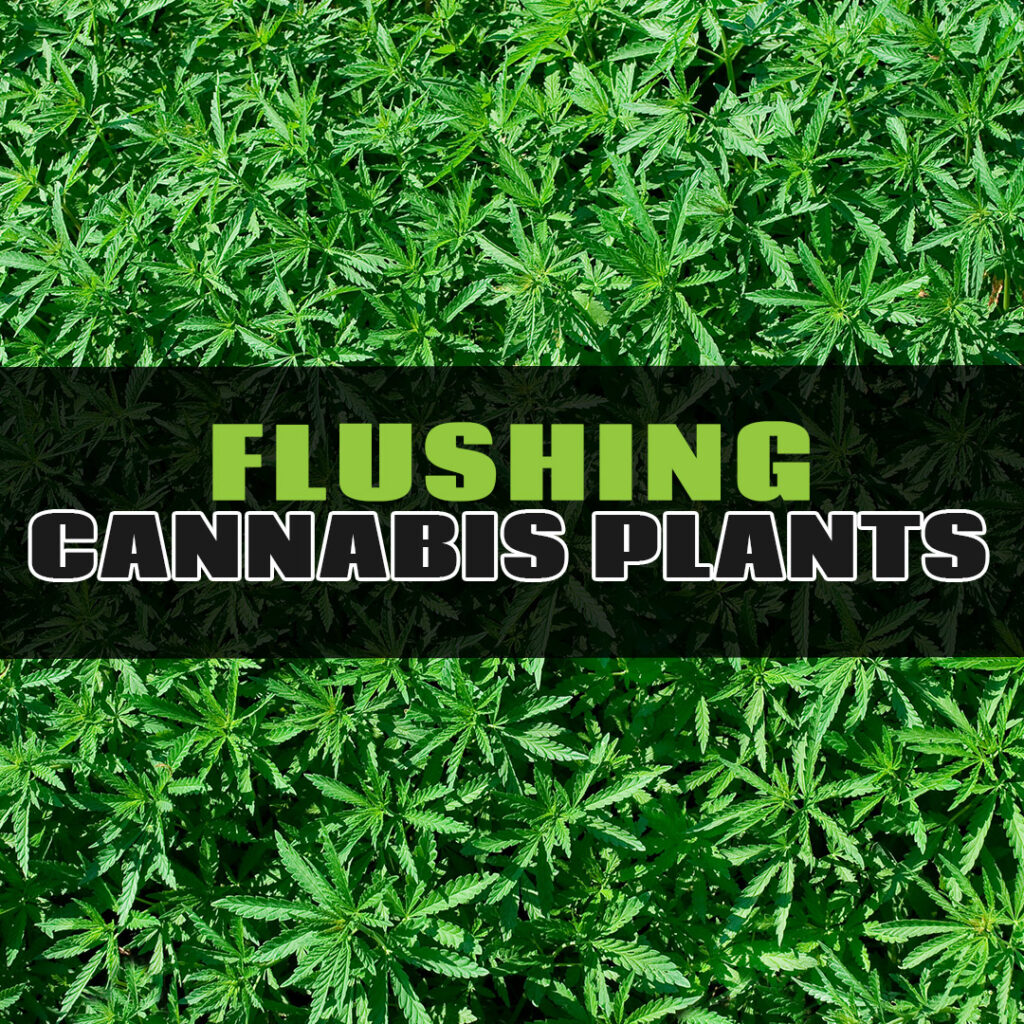One of the most essential steps in cannabis cultivation is flushing, which helps eliminate any built-up salts and nutrient concentrations from the soil, resulting in a pure and flavorful harvest.
But when is the right time to flush cannabis plants, and how should it be done? We asked the Garden Sage the best way to flush plants.
Why Flush Your Cannabis Plants?
Flushing cannabis is a critical step in the growing process that can bring numerous benefits to your plants and your harvest. Not only can it reduce nutrient burn due to too many nutrients in the soil, but it can also enhance the overall smoking experience.
Here are some of the key advantages of flushing cannabis:
Improved Aroma
By removing excess nutrients and salts from the soil, flushing allows the plant to produce a pure and natural taste in the buds, resulting in a more flavorful and aromatic harvest.
Increased Potency
Flushing helps to eliminate any buildup of nutrients in the soil, allowing the plant to use up its stored nutrients and produce higher levels of THC and other cannabinoids.
Smoother Smoke
Flushing removes excess nutrients and salts from the soil, eliminating the harsh and bitter taste that can result from an overabundance of these substances.
The Garden Sage explains that “plants store nutrients in storage facilities throughout their vegetative material, so we must starve the plants out at the end of the flowering process to achieve an even burning plant material that yields a white ash and full flavor profile.”
The Ideal Timing for Flushing
Flushing your cannabis plants at the right time is crucial to achieving a high-quality harvest. But when is the right time to flush? The timing of flushing depends on the growth stage of your cannabis plants.
“It’s important to know how many weeks it takes your cannabis flowers to reach peak maturity. We can’t start flushing when plants have reached peak maturity. We have to start flushing beforehand,” advised the Garden Sage.
Generally, it’s recommended to begin flushing about two weeks before harvest, when the plants are in the flowering stage. This allows sufficient time for any excess nutrients to be flushed from the soil and for the plant to use up the nutrients stored in its foliage.
For recirculating hydroponic systems, the flush times can be less, typically 7 to 10 days, due to the lack of nutrient reserves in the root zone because of the cation exchange capacity of the medium.
“Hydroponic mediums like Rockwool have no cation exchange capacity, so they’re not going to hold onto any nutrients and release them right away,” explained the Garden Sage.
Pay attention to the specific strain you’re growing, as some strains may require more or less time for flushing. You can also monitor the color of the leaves and the trichomes to determine when it’s time to start flushing. When the trichomes have turned from clear to milky, it’s a good indicator that the plant is ready for flushing.
The key to flushing cannabis is to monitor the plant’s growth and appearance and to make adjustments based on the specific needs of your strain.
The Importance of pH Levels in Flushing
During the flushing process, pH levels play a critical role in the health of the cannabis plant and the quality of the harvest. A growing medium’s pH levels refer to the level of acidity or alkalinity in the soil, with a pH level of 6.0 to 7.0 for soil-based gardens and 5.5 to 6.5 for hydroponic gardens being the ideal level for growing cannabis.
If the pH level of the water used for flushing is too high or too low, it can cause problems such as nutrient lockout, where the plant cannot absorb all the nutrients it needs, or an overgrowth of harmful bacteria. This can lead to stunted growth, yellowing leaves, and a reduced yield.
That’s why it’s essential to monitor the pH levels of your water before flushing your cannabis plants. A simple pH meter or pH test kit can help you determine the pH level of your water and adjust it as needed to ensure that it is within the optimal range for growing cannabis.
The Flushing Process
The process of flushing cannabis plants is relatively simple.
Stop Fertilizing
Stop giving your plants any nutrients, including water-soluble fertilizers, at least two weeks before you harvest. This will allow the plant to use up any residual nutrients.
Give Plain Water
Give your plants only plain water (no nutrients added) for the remaining flushing period before harvest. Make sure to water thoroughly so that the excess nutrients are flushed from the soil.
Monitor pH Levels
Monitor the pH levels of the water you give your plants to ensure it is between 6.0 and 7.0. If it’s too high or low, adjust accordingly to ensure the plant can absorb the water and nutrients properly.
Harvest Time
After a week of flushing cannabis flower with pure water, your flushed cannabis plants should be ready for harvest. The buds should have a cleaner taste, and the smoke should be smoother.
During this time, monitor the appearance of your plants closely. If the leaves begin to yellow or show signs of stress, reduce the frequency of watering. The goal is to flush the soil without causing harm to the plant.
When Flushing Cannabis Plants Is Not Required
If you have grown your cannabis plants in amended organic soil with only organic fertilizers, flushing may not be necessary as there should be minimal buildup of excess nutrients in the soil.
As the plant grows, it will absorb nutrients from the organic soil and fertilizers as needed, and the excess will be naturally broken down by the soil microbes, reducing the chance of excess nutrient buildup.









